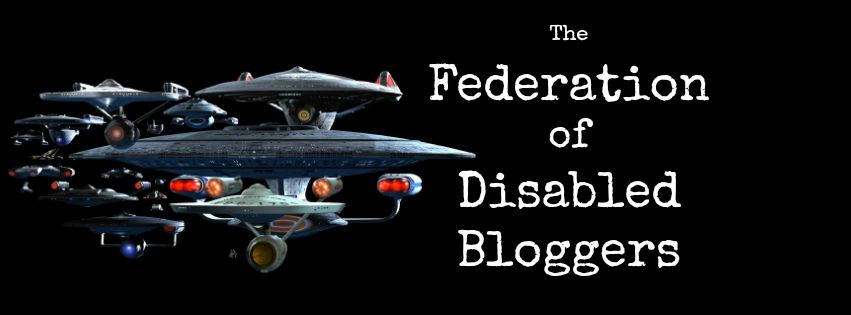In this two part series we focus on disabled writers who are creating new networks, new ways of bringing the writings of disabled people into the world. Last week in Part 1 we looked at #OwnVoices, the Disability Visibility Project, the Deaf Poet’s Society. This week in Part 2 we look at Disabled Writers, The Federation of Disabled Bloggers, Media Dis & Dat and Disability in KidLit.
Disabled Writers
Mainstream media notably lacks disability content. Far too often news coverage of disability usually varies from mildly bad to horrific. National publications still regularly use offensive language such as “wheelchair bound.” As s.e. smith points out in the first Disabled Writers blog post:
“Nondisabled people, as well as newly disabled individuals or people who have been isolated from disability culture, get their cues about disability from the media. Right now, those cues are bad. That needs to stop.”
Disabled Writers works to change the landscape of journalism by creating a network of trained, professional journalists who live in disability communities and let the journalism world know about them. The dream, as shared by s.e. smith:
“This project is not simply about creating a database of disabled people and encouraging members of the media to use the rich wealth of resources at their disposal, including experts with immense breadth of knowledge in a variety of fields. It is also explicitly about fostering opportunity through providing people with sponsorship and skills sharing.”
Disabled Writers partnered with two powerhouses: Vilissa Thompson of Ramp Your Voice! and Alice Wong of the Disability Visibility Project to address the far-too-often white-focus of disability projects:
“We are concerned about the lack of disability representation in media and pop culture, particularly with respect to multiply marginalized disabled people, such as disabled women of color and the transgender disability community.”
Federation of Disabled Bloggers
I snuck in this resource this week because it’s under the radar and oh-so-useful. Sharing her love of Star Trek, Meriah Nichols named the Facebook group The Federation of Disabled Bloggers. She even put this photo as the group’s image.

Image of Star Trek spaceship and text: The Federation of Disabled Bloggers
Meriah is a disabled person and a parent of a disabled person with many blogs including With a Little Moxie but now primarily blogs at her self-named site.
With over 740 members, The Federation of Disabled Bloggers provides an important site of sharing information and resources. The group is set up by and for bloggers with disabilities and the purpose is for: “connecting on disability-related issues, writing, blogging, vlogging, podcasting, and communication.”
Beth Haller and Media Dis-n-Dat
For many of us Beth Haller is the godmother of disability news. Not that she writes the news but that she collects so much of it. Although she currently only posts on Media Dis-n-Dat a few times a week, there are over 12,000 blog posts often with multiple news articles in each one.
At Media Dis-n-Dat “The focus of this blog is the news and entertainment media and people with disabilities. . . .the good, the bad and the mediocre. [Media Dis-n-Dat is] a database of news and information about people with disabilities and disability issues.”
Beth collected a lot of her research on media and disability issues into her 2010 book Representing Disability in an Ableist World: Essays on Mass Media, published by the Avocado Press.
Yes that Avocado Press the one that grew out of the seminal Disability Rag (later A Ragged Edge Online) of Mary Johnson and Cass Irwin.
Beth collects a wide range of news pieces from around the world. This week she brought together a national report on the absence of disabled actors on television, including this stunning statistic: “about 20% of Americans have a disability, only 1.7% of all the characters portrayed on TV last season were visibly disabled…an astonishing 95% of characters with disabilities on TV are played by non-disabled actors.”
Wide-ranging, always informative and full of useful information.
Disability in KidLit
I didn’t discover Disability in Kid Lit until this year even though they’ve been doing fabulous work since 2013. Begun by Corinne Duyvisand Kody Keplinger,
“Disability in Kidlit is dedicated to discussing the portrayal of disability in middle grade and young adult literature. We publish articles, reviews, interviews, and discussions examining this topic from various angles—and always from the disabled perspective.”

Text: Disability in KidLit. The letter ‘D’ is shaped with a wheelchair and the word “in” is over a book silhouette.
Their “Content” section is a treasure trove of knowledge:
- 111 Young Adult/Middle Grade disability-related book reviews
- 16 discussions (example: Romanticizing Mental Illness),
- 23 interviews
- 18 articles about disability tropes (example: Narrative Devices and the Autism Voice)4e
- 8 articles on school experiences (example: Chronic Illness and the Friend Factor)
- 51 articles on various other topics (example: Magical Erasure of Disability in SFF [science fiction / fantasy])
Disability in Kid Lit is a resource that belongs on every writer and reader’s list.
